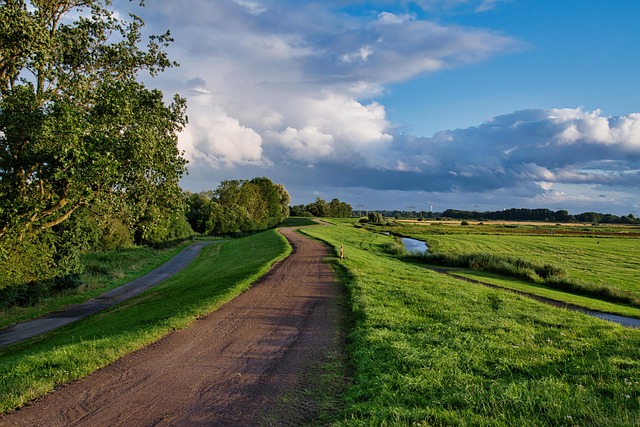
Quiet Meditation Digital Detox in Nature Technology vs Human
In the humming rhythm of our daily lives, screens have become the default soundtrack. Every notification, every ping, adds a layer of noise that can drown out the subtle sounds of breathing and the rustle of leaves. Quiet meditation offers a pause—a deliberate moment of stillness that reorients the mind toward the present. When practiced in natural settings, it becomes a dialogue between human consciousness and the earth’s own quiet, creating a balance that technology alone cannot provide.
The Case for Digital Detox
Modern technology promises connectivity, convenience, and instant knowledge, yet it also fragments attention and heightens stress. Studies in behavioral science show that prolonged exposure to digital media can reduce sleep quality, elevate cortisol levels, and impair social bonding. A digital detox, therefore, is not a rejection of progress but a reclaiming of the human capacity to be fully present. By stepping away from screens, individuals can restore focus, reduce anxiety, and nurture authentic relationships with both people and the planet.
Nature as a Natural Therapist
The therapeutic value of nature is rooted in our evolutionary history. When early humans moved through forests, rivers, and open fields, their senses were attuned to the environment’s rhythms. Today, the same environments can counterbalance the overstimulation of screens. Breathing in fresh air, listening to birdsong, and feeling earth underfoot ground the mind, creating a fertile ground for quiet meditation to flourish.
Quiet Meditation Techniques in the Wilderness
Practicing quiet meditation in nature leverages the environment’s inherent calm. Begin by finding a comfortable spot—a mossy clearing, a quiet lakeside, or a shaded grove. Sit or lie with an open spine, close your eyes, and bring attention to the breath. Notice the inhale and exhale without judgment. As thoughts arise, acknowledge them, then return to the rhythm of breathing, allowing the surrounding silence to fill the space left by digital chatter.
- Mindful breathing: focus on the sensation of air moving through nostrils.
- Body scan: gently shift attention to each part of the body, releasing tension.
- Sound awareness: let distant bird calls or rustling leaves become part of the meditation.
- Grounding visualization: imagine roots extending from your feet into the earth, anchoring you.
- Compassionate reflection: send kindness to oneself and to the surrounding ecosystem.
Technology vs Human Connection
Human beings are inherently social creatures. While technology facilitates instant communication, it can also foster a sense of isolation when interactions become purely virtual. Quiet meditation in nature restores the ability to listen—to others, to oneself, and to the world. It encourages present‑moment awareness that is essential for meaningful conversation and empathetic listening, qualities that cannot be replicated by an algorithm or a voice‑activated assistant.
In our quest for connectivity, we often overlook the depth of connection that lies in silence. By removing digital distractions, people notice the warmth of a partner’s hand, the shared look of wonder at a sunrise, or the subtle shifts in tone during a conversation. These moments reinforce emotional bonds, build trust, and provide a reservoir of resilience that technology alone cannot supply.
Planning a Digital Detox Retreat
Choosing the right environment is the first step toward an effective detox. Look for secluded cabins, tree‑house lodges, or small campgrounds that limit Wi‑Fi access. Inform close contacts about your plans, setting expectations for communication. Pack essentials—water, comfortable clothing, a notebook, and a small meditation cushion—but leave digital devices behind, or at least store them in a locked drawer to reduce temptation.
- Define a clear start and end date for the retreat.
- Identify the environment that best supports stillness—forest, beach, mountains.
- Pack minimal gear, focusing on items that enhance sensory experience.
- Set intentions: what you hope to learn, feel, and release.
- Plan daily routines: sunrise meditation, midday walk, evening reflection.
- Prepare for emergencies: keep a basic first aid kit and a phone in a separate bag.
- Return with a journal: document insights, emotions, and sensations experienced.
Integrating Quiet Meditation into Daily Life
After a retreat, the challenge is to maintain the calm. Start small: set a daily alarm for a five‑minute breath awareness break. When your phone lights up, pause for a single conscious inhale, then a slow exhale before engaging with the notification. Over time, extend the practice, gradually replacing hurried scrolling with intentional pauses. This routine creates a buffer between external stimuli and internal response, allowing for deeper quiet meditation even amid a busy schedule.
Adopting a quiet meditation mindset reshapes the way we interact with technology. We learn to evaluate each notification as a choice rather than a compulsion. Our relationships—both human and environmental—benefit from the clarity that arises when we step outside the screen’s glow and listen to the world’s unfiltered sounds. This conscious shift fosters a balanced coexistence where technology serves humanity, not the other way around.
Ultimately, the practice of quiet meditation in nature offers a powerful antidote to the constant barrage of digital stimuli. By honoring the silence that surrounds us, we reclaim the ability to hear our own heartbeats, to observe the natural world’s rhythms, and to connect more authentically with those around us. In a world that never pauses, these moments of stillness become precious anchors, reminding us that the greatest technology of all is our own mind and its capacity for calm.



